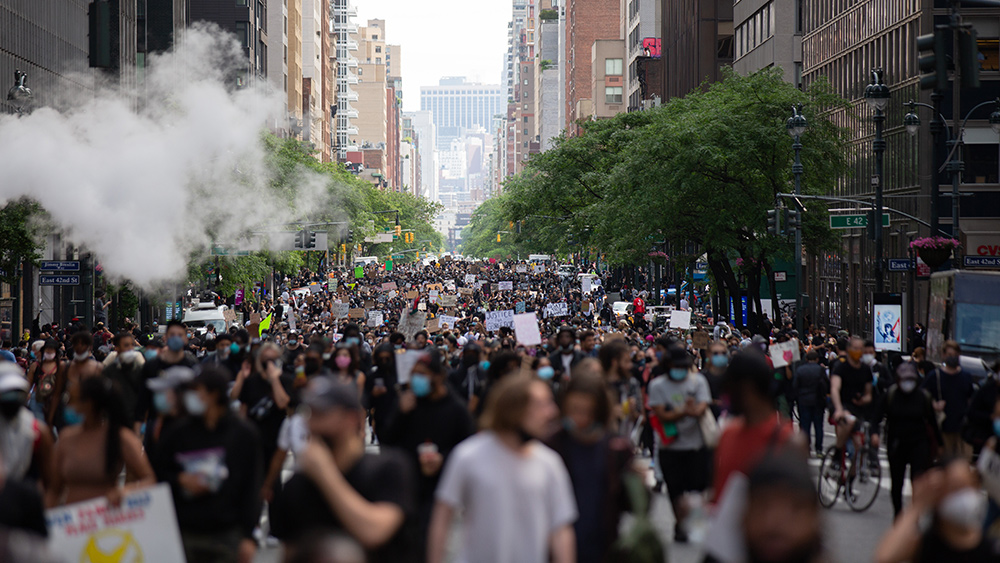
New York was named after James Stuart, Duke of York, who would go on to become James II and VII, King of England and Scotland. Stuart captured several Dutch settlements along the Atlantic coast, including New Amsterdam, which was quickly renamed to New York. Stuart would begin expanding English involvement in the trans-Atlantic slave trade. Between 1672 and 1689, James, through his family's Royal African Company, transported between 90,000 to 100,000 African slaves to English colonies in the Caribbean and the rest of the Americas.
The slave trade in New York would not be abolished until a century later in 1799, when the state finally passed laws to emancipate their slaves.
While the origins of New York state may invoke a racist past, that's not to say that they don't also have monuments to slavery etched into the city's very streets. As of 2018, at least 24 streets, one high school and two upscale housing divisions in the state have been named after New Yorkers who were heavily involved in the slave trade between the 17th and 18th centuries.
These monuments to racism include Bayard street, named after the influential slave trading Bayard family. This family operated sugar mills that used slave labor and had stakes in at least eight slave-trading ships. Another is Stuyvesant High School and Stuyvesant street, named after Dutch colonial superintendent Peter Stuyvesant, who was once known as “the largest private slaveholder” in what was then called New Amsterdam.
Given New York's racist past, perhaps it's time for the city to further reevaluate its current stance on streets, buildings and monuments named after and erected in the memory of figures relevant to the state's history. Hopefully, New York can begin to understand why it should not try to hide its history.
Listen to this episode of the Health Ranger Report, a podcast by Mike Adams, the Health Ranger, as he talks about how people can make sense and find sanity in this insane world that is filled with contradictions.
New York pushing ahead with taking down historical monuments
As New York state continues to grapple with its own racist history, it has decided to go ahead and try and scrub clean its past anyway.
In New York City, Democratic Mayor Bill de Blasio has created a commission to “identify areas where discrimination continues to manifest itself in the city,” with its main objective being to review whether or not certain historical landmarks such as statues or building decorations are “appropriate.”
One of the first targets of their plan to revise history is Gracie Mansion, the official residence of the mayor of New York City. Chirlane McCray, first lady of New York, found that the house was built in 1799 by enslaves and indentured servants.
Perhaps worse still, the equestrian statue of former president and governor of New York Theodore Roosevelt outside New York City's American Museum of Natural History will be taken down after a relentless decades-long campaign by historical revisionists. The bronze monument shows the former president on a horse with two men walking on either side of him – one Native American and one African. Activists have argued that the monument portrays the former president as superior to the two men simply because he's riding a horse. (Related: Rioters in Portland TEAR DOWN statue of Founding Father George Washington.)
Ellen V. Futter, president of the museum, said that the decision to remove the equestrian statue was not an indictment on Roosevelt's character, but a critique of the statue's “hierarchical composition.” Futter says that the museum will continue to honor the former president, especially for his role as “a pioneering conservationist.”
https://twitter.com/Reuters/status/1275169186646577154
Other historical monuments in New York state are set to be taken down as well, such as the statue of Philip Schuyler outside of Albany City Hall. Schuyler, who was born, lived in and died in Albany, was a major general and Revolutionary war hero, city alderman, state assemblyman, state senator and senator for New York. He was also the father of Elizabeth Schuyler Hamilton, wife of founding father and former Secretary of the Treasury Alexander Hamilton – who, despite what pop culture might have people believe, was not a pro-immigrant slavery abolitionist.
The city of Albany erected the statue of Maj. Gen. Schuyler in 1925 in his honor. However, Albany Mayor Kathy Sheehan has ordered city workers to erase history and take down Schuyler's statue because he owned 17 slaves. The issue was raised by Albany's first ever “diversity officer.”
More and more statues of historical figures are either being taken down by authorities or being vandalized and destroyed by rioters. Stay on top of the Radical Left's attempts to make American history politically correct by subscribing to PoliticalCorrectness.news.
Sources include:
Please contact us for more information.























